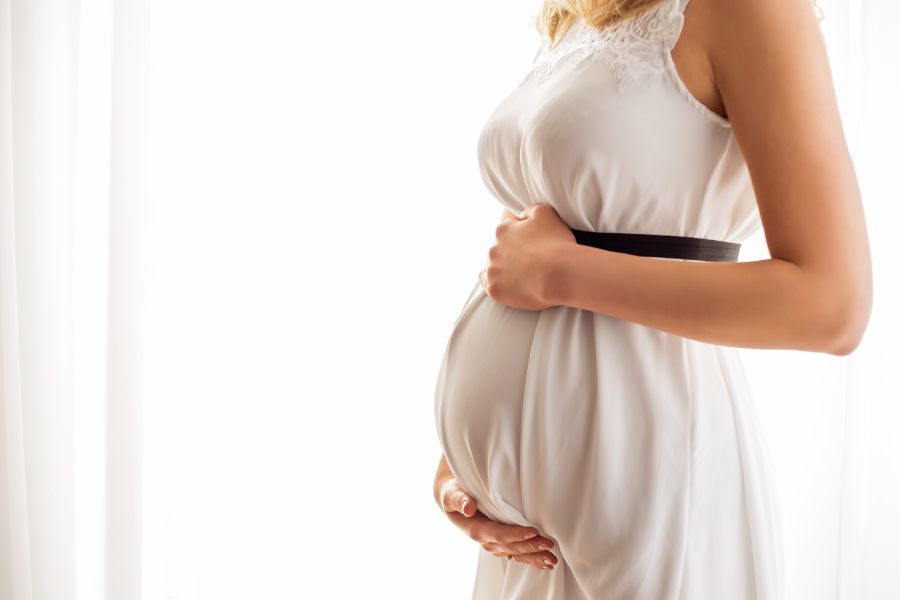Mowing while pregnant often raises concerns for expectant mothers. Pushing a lawn mower, whether a standard push mower or a riding lawn mower, involves considerable physical activity. This activity, nestled within the tranquility of a well-kept lawn, can be a source of exercise. It also creates a moment of peaceful outdoor experience.
However, for pregnant women, the decision to engage in such tasks comes with various considerations. The primary focus is maintaining a healthy pregnancy while balancing the desire to participate in everyday activities. Let’s analyze the intricacies of mowing while pregnant, offering guidance on approaching lawn care tasks safely and effectively.
Assessing Pregnancy Risks and Physical Limitations
Pregnancy is a delicate period that demands careful consideration of any physical activity. That includes the seemingly benign task of lawn mowing. For pregnant women, assessing the risks and physical limitations is paramount to ensuring a healthy pregnancy and avoiding unnecessary complications.
Physical Strain and Equipment Use
The physical exertion required to operate a lawn mower, whether a riding mower or a push mower, should not be underestimated. The latter may pose a significant strain due to the pushing and maneuvering involved. For those opting for a riding lawn mower, the vibrations and movements, though less strenuous, still warrant caution. We suggest that pregnant women wear long pants while mowing to protect their legs from potential scrapes and cuts. Long pants also limit exposure to allergens and insects.
The Risks Associated with Physical Activity
Engaging in physical activity during pregnancy, such as lawn mowing, can be beneficial if done cautiously. However, it’s crucial to consider the intensity of the activity and the individual’s health condition. For some, especially in the later stages of pregnancy, the physical demands of pushing a lawn mower might be too taxing. In such cases, avoiding mowing or opting for lighter tasks within lawn care and resting well is necessary.
Potential Health Complications
Certain health conditions intensify the risks associated with lawn mowing. Pregnant women with complications like preterm labor, low amniotic fluid, high blood pressure, or other high-risk factors should avoid mowing altogether. In these scenarios, the exertion and stress of the activity could exacerbate their condition. This could impact the health of both mother and baby in the long run.
Noise Considerations
The loud noises lawnmowers emit can also be a factor to consider. While not directly harmful, they can contribute to stress or discomfort, especially in the heightened sensory state often experienced during pregnancy.
Lawn Mowing and Labor Myths
Various myths surround physical activities like lawn mowing and their ability to induce labor. Moderate physical activity is generally safe and beneficial during a healthy pregnancy. However, it is a misconception that activities like mowing the lawn can or should be used as a method to induce labor.
Safety Precautions and Tips for Mowing the Lawn While Pregnant
Mowing the lawn while pregnant is generally safe, especially during the first trimester and early pregnancy. That’s owing to the fact that you take a few simple precautions. However, during the second and third trimesters, pregnant women should be more cautious due to increased physical exertion and the changing dynamics of their bodies.
Stay Hydrated
Pregnant women must stay hydrated while mowing the lawn. Dehydration poses a high risk to both mother and baby, so drinking plenty of water before, during, and after lawn mowing is essential.
Choose the Right Mower
Electric mowers are generally safer and more convenient than gas-powered mowers for many pregnant women. They are easier to handle and do not emit fumes that can be harmful during pregnancy. If physical exertion is a concern, consider using a self-propelled mower to reduce strain.
Take Frequent Breaks
The importance of taking frequent breaks cannot be overstated. If you feel dizzy, tired, or overheated, it’s vital to stop mowing immediately and rest. Overexertion may be harmful, especially in the later stages of pregnancy.
Avoid Mowing in Extreme Weather
Mowing the lawn in hot or humid conditions increases the risk of heat-related illnesses. It’s best to mow early in the morning or late in the afternoon when temperatures are cooler.
Wear Appropriate Clothing
Protective clothing, including long pants, gloves, and supportive shoes, helps minimize the risk of injuries and protects against allergens and insect bites.
Listen to Your Body
If at any point the task feels too strenuous, stop mowing. Pregnant women should always listen to their bodies and avoid pushing themselves beyond comfortable limits.
Alternative Lawn Maintenance Activities for Pregnant Women
For many pregnant ladies, especially in the later stages of pregnancy, engaging in less physically demanding yard work can be a safer alternative to mowing the lawn. Here are some suggestions:
- Watering and Weeding: These activities require less physical exertion and can still contribute to maintaining a healthy and attractive lawn.
- Gardening: Doing light gardening can be therapeutic and less strenuous than mowing.
- Delegating Mowing Tasks: If possible, delegate the mowing to a partner, family member, or professional service, especially if the pregnancy is high risk or during the second and third trimesters.
- Using Lawn Care Services: For those unable or prefer not to engage in lawn mowing or yard work, employing a lawn care service is a convenient option.
Can Mowing the Lawn Induce Labor?
The idea that lawn mowing can induce labor is a common myth but lacks scientific backing. While moderate physical activity is generally encouraged during pregnancy for its health benefits, no evidence suggests that lawn mowing or engaging in similar activities can initiate labor.
Labor is a complex biological process typically triggered by hormonal changes and physical factors specific to the end of pregnancy. The belief that physical exertion from lawn mowing induces labor likely stems from a broader misconception that increased physical activity can stimulate this process.
It’s important to note that every pregnancy is unique. So, what might be a safe activity for one pregnant woman may not be advisable for another. Women with a history of preterm labor or those at high risk for complications should be particularly cautious about engaging in strenuous activities as their due date approaches.
Activities Pregnant Women Should Avoid

It’s great to stay active and exercise during pregnancy. However, pregnant women should avoid certain activities to ensure the safety of both the mother and the baby. These activities include:
- Contact Sports and High-Impact Activities: Sports that carry a high risk of impact or injury, like soccer, basketball, or horseback riding, should be avoided due to the risk of abdominal trauma.
- Activities with Fall Risk: Avoid activities that pose a significant risk of falling, such as skiing, ice skating, or gymnastics. More so in the second and third trimesters, as the center of gravity changes.
- Heavy Lifting and Overexertion: Lifting heavy objects or engaging in physically strenuous labor can increase the risk of injury, preterm labor, or complications like hernias.
- Hot Tubs and Saunas: Overheating in hot tubs and saunas poses a risk to the developing fetus, particularly in the first trimester. It’s advisable to avoid high-heat environments.
- Scuba Diving: Scuba diving creates gas embolism (gas bubbles in the bloodstream), which can be dangerous for both the mother and the fetus.
- Exposure to Harmful Substances: Pregnant women should avoid exposure to toxic chemicals, including certain cleaning agents, pesticides, and solvents. This could be harmful to fetal development. But is vaping safe for pregnant women? Find out here.
- Certain Types of Exercise: Be cautious of exercises that involve lying flat on the back after the first trimester. Those with intense, jarring motions or rapid direction changes should also be avoided.
Understanding and Managing Risks
Assessing the Risks of Lawn Mowing
The primary risks include physical strain, heat exhaustion, and the potential for falls or accidents. Using an electric mower can mitigate some risks, such as those associated with starting a gas-powered mower or exposure to fumes.
Yard Work Alternatives
Many pregnant women find that alternative yard work tasks pose fewer risks. Gardening, for instance, is safer and more enjoyable, allowing for better control over physical exertion levels.
Wearing Sunscreen and Protective Gear
When engaging in outdoor activities like lawn mowing, a pregnant woman must wear sunscreen to protect against harmful UV rays. Additional protective gear, such as gloves and supportive footwear, will also minimize the risk of injury.
Heat Exhaustion Awareness
It’s essential to be aware of the signs of heat exhaustion, especially in the later stages of pregnancy. Pregnant women should avoid mowing during the hottest parts of the day and take frequent breaks in the shade to stay cool.
Listening to the Body
Pregnant women must listen to their bodies and stop any activity that becomes uncomfortable or overly taxing. This includes stopping mowing if they feel dizzy, fatigued, or overheated.
Final Thoughts
While lawn mowing and yard work are part of a healthy routine, pregnant women should approach these activities with caution and awareness of the potential risks. Many pregnant women may safely participate in these tasks by using an electric mower, wearing appropriate protective gear, staying hydrated, and avoiding the hottest parts of the day.
However, listening to one’s body and consulting a healthcare provider for personalized advice is essential. This helps you address any concerns or complications that arise. Above all, the safety and well-being of the mother and the baby should always be the priority.



